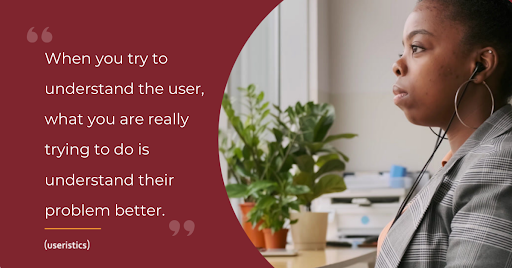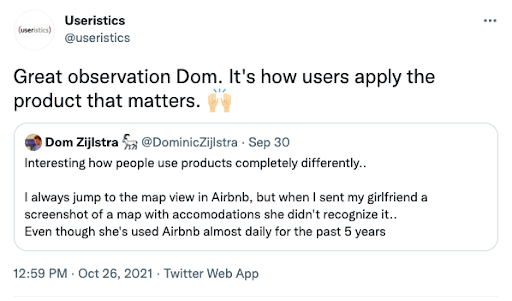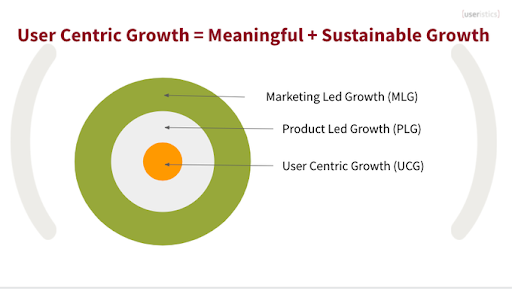8 Practical Tips To Understand Your Users Better Right Now
Tina Nayak

The most impactful way to leverage your startup is by understanding your users.No matter what stage it is in – because it’s never too early and never really ‘done’ when it comes to your users.
Paul Harwood, co-founder, Useristics frames it wonderfully in this way:
Paul Harwood, co-founder, Useristics frames it wonderfully in this way:
“When you are trying to understand the user,
what you are really trying to do is understand their problem better”.
what you are really trying to do is understand their problem better”.
So here are 8 actionable tips to get started, no matter where you are right now in your startup journey.
#1: Start with first principles -- The WHY
More precisely, think along these 3 specific questions:
1. WHY did you start your business in the first place?
(Eg. We started to solve the problem of __ for __users.)
2. WHY does the user care about this problem?
(How does it affect their life right now?)
3. WHY do you care about solving this problem?
Write out your responses in *detail*.
#2: Iterate and reiterate
As you write out your responses to the 3 questions and start to define your problem, you will notice that over multiple iterations, your responses are evolving and the solutions are starting to emerge.
BUT, the mistake most startup teams make at this point is to jump straight to the solutions. They dive into the solutions they are creating and how those are the *most perfect* solutions that could ever exist in the history of humanity.
Resist. That. Temptation. Please.
The world’s most famous theoretical physicist says it best and says it all.

#3: Problems come in various shapes & sizes
And with varying degrees of impact.
Why is impact important?
Because a problem that might seem significant might hardly move the needle from an impact perspective & vice versa.
This is why, it is even more critical to spend time defining the user problem & not jump to tactical solutions.
#4: Remind yourself & your teams tirelessly & often
“We are defining the problem.”
Half-baked problem statements lead to:
misleading solutions
wrong initiatives
wasted resources
failed product launches
and repeatedly bad product & business decisions.
This CAN be avoided.
Focus deep on elaborately understanding and defining the problem.
#5: List your assumptions and problem statements
It’s generally hard to catch an assumption you’re carrying.
Because often it’s hard to differentiate between an assumption and objective truth. We believe our own assumptions to be the objective truth.
They’re not.
Encourage open, transparent and honest questions from your team members.
Don’t judge yourself or encourage judgments from others. Nip that in the bud.
Go ahead and list them. Then bucket them.
#6: Prepare to understand your users
Design questions to understand the building blocks:
Attitudes
Behaviours
and most of all the Context.
Just as content without context is meaningless, your product won’t drive impact to its potential without the context of the market.
This is also why a product that’s widely successful in Germany may not work in India. Or it may have to look vastly different to find success in India. That’s because of these 3 building blocks – they different across markets and cultures
#7 Assume nothing

Tweet this
This tweet is the best example of how the same product is used by different users. So, assume nothing. Take nothing for granted because you’ll be surprised by how much you didn’t think of.
#8: Be prepared to let go, change direction or take a U-turn
What moves the needle for you, may not necessarily move the needle for your end-user.
Or what matters to your end-user may not be a viable business proposition for you.
You’d rather learn this hard but essential point now than later.
In other words, Pivot. Or, let go.
It’s hard to abandon or change.
But why not change the direction of your train when you know it’s hurtling towards a crash?
Change your mindset to — What’s our biggest lesson from this?
Asking this question, taking this mindset, will allow you and your team to still stay true to your original cause (ie, the problem and your user) but not get bogged down by what seems to be a disappointment. It’s just a change of course.
Useristics would like to leave you with:

I know understanding users is hard! I’ve been there.
There are so many mistakes I could’ve avoided had I known key foundational principles early on in my career.
That’s why we’re launching actionable ‘how-to’ courses designed for ambitious growth-oriented startups.
You will learn the fundamental building blocks, & best practices we’ve learnt working in high-growth startups around the world.
Most of all, how to help you –> make it actionable.

We are a behavioral science international market and UX research consulting company. We empower ambitious, growth-oriented businesses to better understand their customers and users, in order to build products and experiences they can’t live without. We empower businesses to build and brand better.
Useristics, Inc.
Four Embarcadero Center,
Suite 1400
San Francisco, CA 94111
USA
Copyright © 2024

